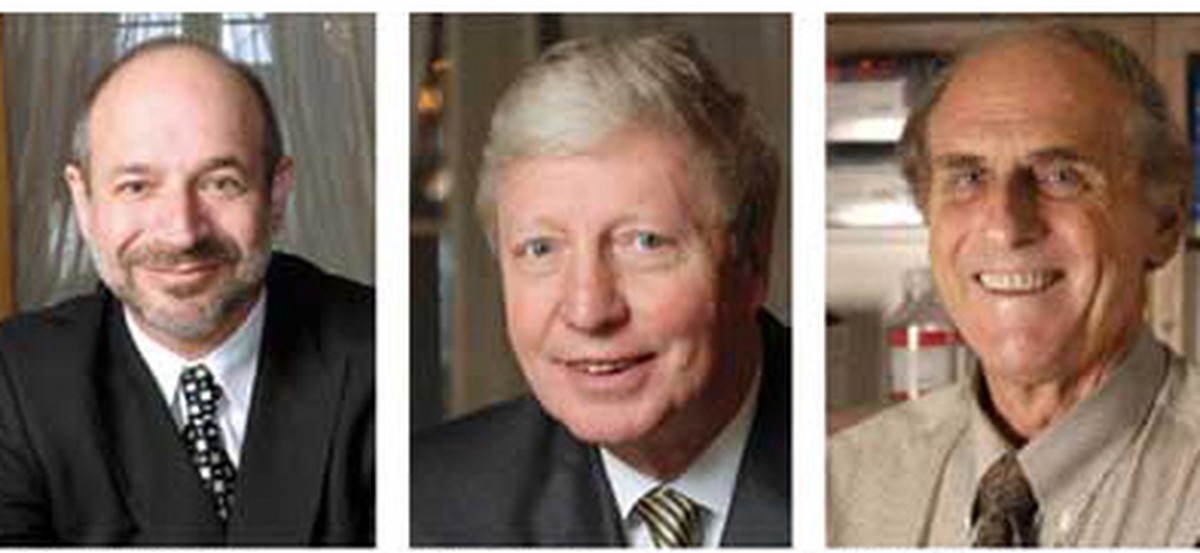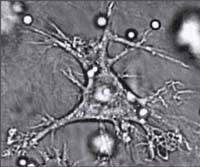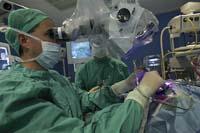Nobel Prize in Medicine for immune system researchers
2011/10/03 Galarraga Aiestaran, Ana - Elhuyar Zientzia
NOTE (15:30): Rockefeller University Announces Ralph M. When Steinman died on September 30, the family today reported the death to the university. Pancreatic cancer was detected four years ago and has survived so far thanks to a therapy designed by Steinman himself. This therapy is based on dendritic cells, the discovery that has served to win the Novel. The Nobel Foundation discovers death after announcing the prize.
(20:00) The Nobel Foundation has decided to reward Steinman.
Data of interest
The  Nobel Foundation has announced on its official website the decision adopted by the Kalorinska Institute. The work of the three award-winning researchers has been "fundamental" to understanding the immune system.
Nobel Foundation has announced on its official website the decision adopted by the Kalorinska Institute. The work of the three award-winning researchers has been "fundamental" to understanding the immune system.
In fact, today it is known that people and animals have two types of immunity to protect themselves from bacteria and other microorganisms: their own and acquired immunity. Well, Beutler and Hoffmann found basic mechanisms to activate their own immunity. Steinman, for his part, identified key dendritic cells in acquired immunity and investigated their function.
Thanks to its discoveries, the Karolinska Institute has highlighted the development of new ways of disease prevention and treatment. It examples improved vaccines to protect against infections and methods that stimulate the immune system against tumors.
Hoffman and Beutler, winners of the first half of the prize
Although Hoffmann and Beutler will receive half of the prize together, the work was not done at the same time.
The discovery that brought him the award that Jules Hoffmann made in 1996. He investigated how fruit flies are protected from infections; they were mutated flies, some of which had mutated some gene involved in the development of the embryo, the Toll gene. When he infected these flies, he saw that flies were unable to launch protective mechanisms. He discovered that this gene is key in the immune system. Subsequently, it demonstrated that the protein produced by the Toll gene participates in the identification of pathogens and that their activation is essential to build the first line of defense against them.
The discovery that Bruce Beutler made two years later, in 1998, was decisive for the award. I was investigating the PTS receptor causing septic shock. PTS is a product produced by bacteria that cause a disproportionate immune system response, leading to septic shock.
Beutler realized that PTS resistant mice had a mutation in a given gene that was very similar to the Toll gene. As the PTS receptor he sought was the gene protein. When joining the PTS, inflammatory signals are generated and, when there are many PTS, septic shock appears.
This discovery showed that intrinsic immunity was similar in insects and mammals. He also opened the door to numerous investigations to study his own immunity.
Steinman, winner of the other half
Ralph Steinman did earlier than the other two research that recognized him at the  Nobel Laureates. In 1973 he identified the dendritic cell. He suspected it could be important for the immune system and it did work properly because it showed that dendritic cells activate T cells. T cells develop a crucial anti-substance memory in acquired immunity. Therefore, Steinman's research has been key to understanding this type of immunity and that is why they will give him half the Nobel Prize.
Nobel Laureates. In 1973 he identified the dendritic cell. He suspected it could be important for the immune system and it did work properly because it showed that dendritic cells activate T cells. T cells develop a crucial anti-substance memory in acquired immunity. Therefore, Steinman's research has been key to understanding this type of immunity and that is why they will give him half the Nobel Prize.

Gai honi buruzko eduki gehiago
Elhuyarrek garatutako teknologia





